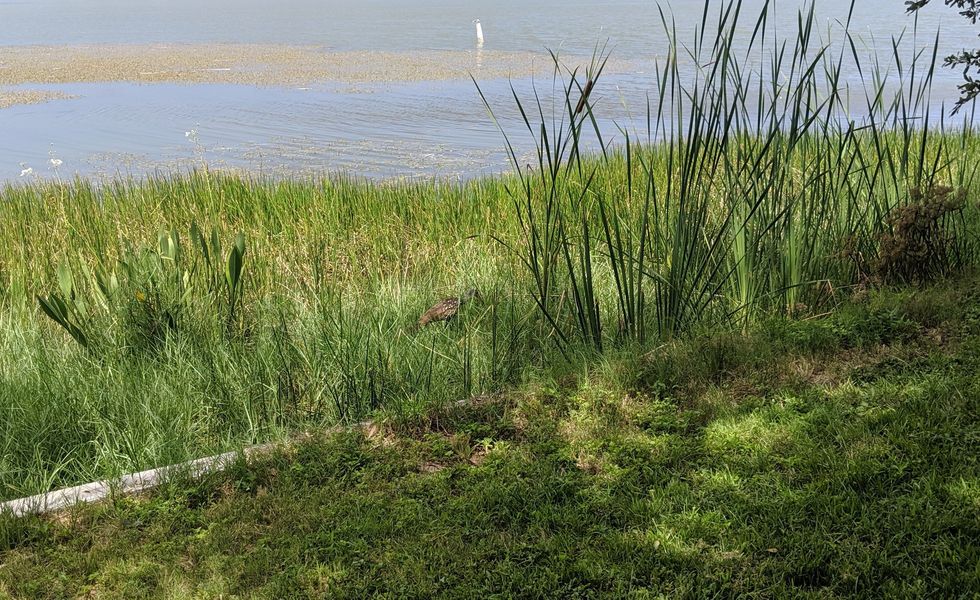While enjoying the park I frequent throughout the week, I saw a limpkin once again walking through the long grasses that lined the lake. At some points, you could barely see the limpkin; with her brown speckled feathers, she blends in with the grass.
She moseyed along the shore, searching for her favorite meal, apple snails. The snails live in big green shells in the shallows and they are the size of an apple. They are the biggest snail I have seen, and I don't blame the limpkin for finding them so satisfying. As she carefully scanned the waters another two brown shapes emerged stumbling through the grass behind her. Fuzzy little long-necked, long-beaked chicks, baby limpkins
This spring and summer in Florida I have seen many baby birds of species I had only seen since moving to Florida and had never seen babies of before. The limpkin is still one of my new observations, so I was surprised when I saw two babies trailing behind her. I had seen this limpkin at this lake many times and had never seen babies, but here they were.
At times they were barely visible, buried in the grass that stood over their mom's head. This is a good thing because it keeps the young well hidden from predators. Although it was hard to see them, when I listened closely I could hear their constant faint chirpings, and little splashes and plunks as they stumbled through the water.
Their mother led them through the reeds, searching intently for dinner, she needed enough to satisfy all three of them. I followed them quietly for a while, watching and careful not to disturb them. I commonly see the evidence of the limpkin's appetite when I've seen dozens of empty apple snail shells littered on the shore, but I had yet to see the limpkin catch and eat one.
After watching the mother and her babies for a while I was about to leave when one of the chicks chirping grew louder, more high pitched, and desperate-sounding. I was worried that something was wrong. Was there a predator? Was the chick hurt? I looked closer. The one chick making all the commotion was close behind its mother who was focused on something in the water. Then with her long angled beak, she picked up an apple snail. The commotion was because the chick was hungry, and like all young, had not yet learned the patience of waiting for mom to prepare its meal.
Mother limpkin still had a job to do, break the snail out of its shell. I was curious to see how mother limpkin would do this. Then she tossed the snail to the ground and proceed to tap it. Tap, tap, tap, tap. Still, it was stubborn. The chick was growing even more impatient, begging mom for lunch. Quiet and focused, mother picked the snail up and threw it down again and with her beak, another tap, tap, tap, tap. After another few rounds, finally, she pulled some out and kindly and patiently fed the little pieces to her chick, in perfect bite-sized amounts. I am confident my limpkin friend is a very good mother.



















